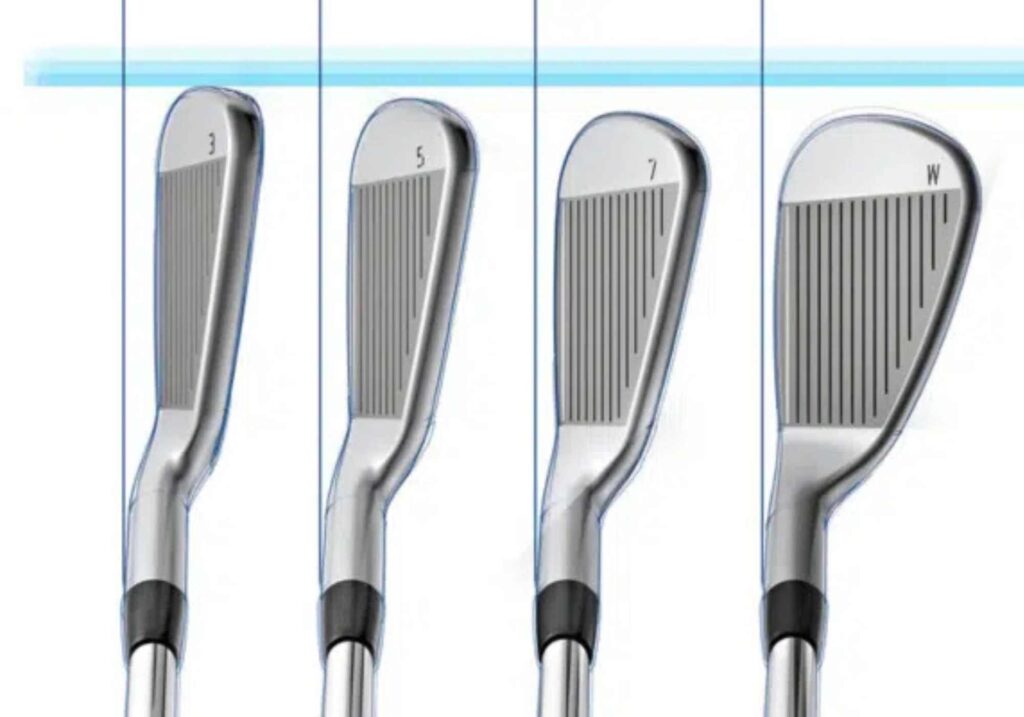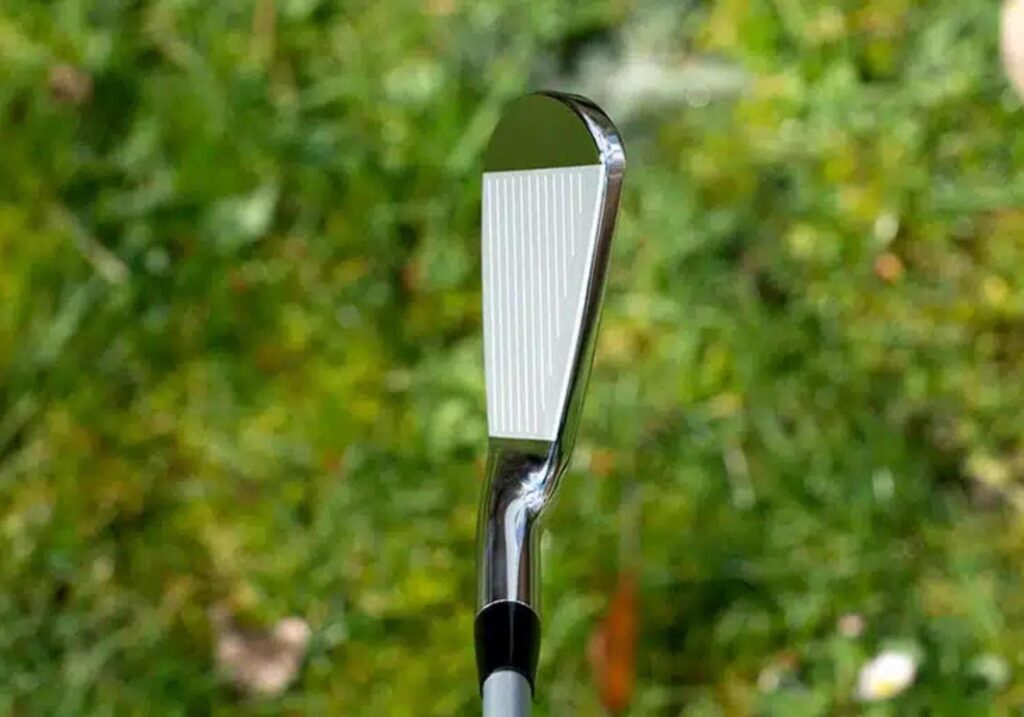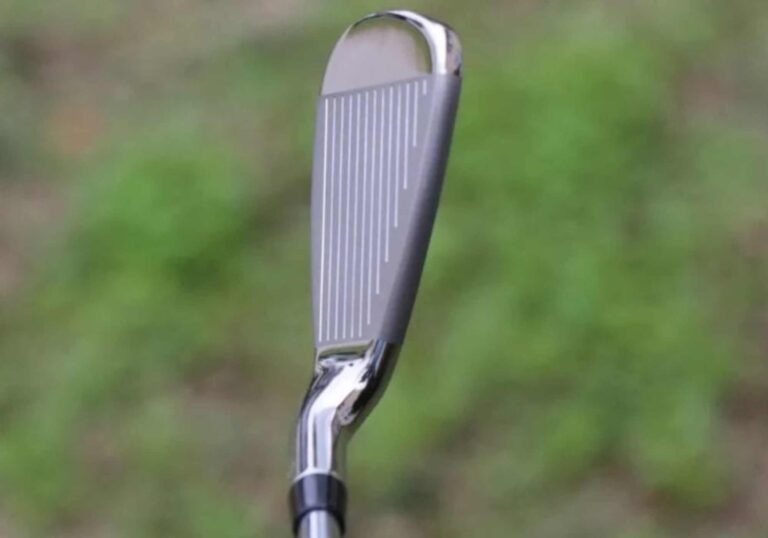If you’ve ever looked closely at a golf club, especially an iron or hybrid, you might have noticed that the leading edge of the clubface doesn’t always line up with the front of the hosel. That little gap is called offset, and while it might seem like a small design detail, it can have a big effect on your shots.
So what exactly is golf club offset, and why should you care?
What is offset?
Offset is the distance between the leading edge of the clubface and the front of the hosel. In simple terms, if you place the club down at address, the clubface sits slightly behind where the shaft enters the clubhead. The more offset a club has, the farther back the face is from the shaft.
Manufacturers measure offset in millimeters, and it is most common in game improvement clubs. Some players’ irons and wedges have little to no offset at all.
Why do clubs have offset?
The main reason is forgiveness. Offset helps players square the clubface at impact, which is especially helpful if you tend to leave the face open and hit slices. By positioning the clubface slightly behind the shaft, you get a split-second more time in the downswing for the face to close. That small change can make a big difference in where the ball ends up.
Offset can also help launch the ball higher. With the face set back, it effectively moves the center of gravity slightly behind the ball at impact, adding a touch of loft and helping shots get airborne more easily.
How offset can help your game
If you are a newer golfer or someone who struggles with a slice, offset can be a real friend. Here’s why:
- Helps square the clubface: More time for the face to rotate means straighter shots for players who tend to leave it open.
- Promotes a higher ball flight: Easier launch can help shots carry farther.
- Encourages cleaner contact: The design can reduce the tendency to hit thin or low shots.
That’s why you’ll often see more offset in beginner-friendly irons, hybrids, and even some fairway woods.

Are there any downsides to offset?
For more advanced players or those who naturally square the clubface, too much offset can sometimes create a pull or hook. Some golfers also find the look of offset less appealing, especially if they prefer a more traditional, compact head shape at address.
Offset can also affect shot shaping. Players who like to work the ball both ways may find it slightly harder to hit a fade with a club that has a lot of offset.
How offset changes through a set
In many iron sets, the amount of offset decreases as you move from the long irons to the short irons and wedges. This is because longer irons are harder to square and launch, so more offset helps. Short irons require more precision and less help squaring the face, so manufacturers often reduce offset for better control.
For example, a game improvement set might have 5.5 mm of offset in the 4-iron but only 2 mm in the pitching wedge.
Offset in different club types
- Irons: Most noticeable in game improvement and super game improvement models.
- Hybrids: Often built with offset to help with launch and forgiveness.
- Fairway woods: Some feature slight offset for the same reasons, especially in higher-lofted models.
- Drivers: Offset drivers exist, usually targeted at slice correction, but they’re less common than offset irons.

Should you choose clubs with offset?
If you’re a beginner, mid-handicapper, or someone fighting a slice, offset can be a big help. If you’re a low handicapper who wants more shot-shaping control, you might prefer less offset.
The best way to know is to try different clubs and see how they look and feel at address. Some players gain confidence just from the way an offset club frames the ball, while others prefer the look of a straighter leading edge.
Tips for adjusting to offset
If you’ve never used clubs with offset before, they might feel different at first. Here are a few tips:
- Give yourself a few range sessions to adapt before making judgments.
- Focus on your target rather than the look of the clubface at address.
- Pay attention to your ball flight to see if the offset is helping you straighten your shots.
Final thoughts
Offset might be a small design detail, but it can make a big difference in playability and confidence. For many golfers, especially those just starting out, it’s a quiet helper that works behind the scenes to produce better shots. Understanding what it does and why it matters will help you make smarter choices when buying clubs and could make your time on the course a lot more enjoyable.
Let’s hear from you
Do you play with clubs that have offset? Has it helped your game, or do you prefer the look and feel of less offset? Share your experience and let us know where you stand on this subtle but important design feature.
